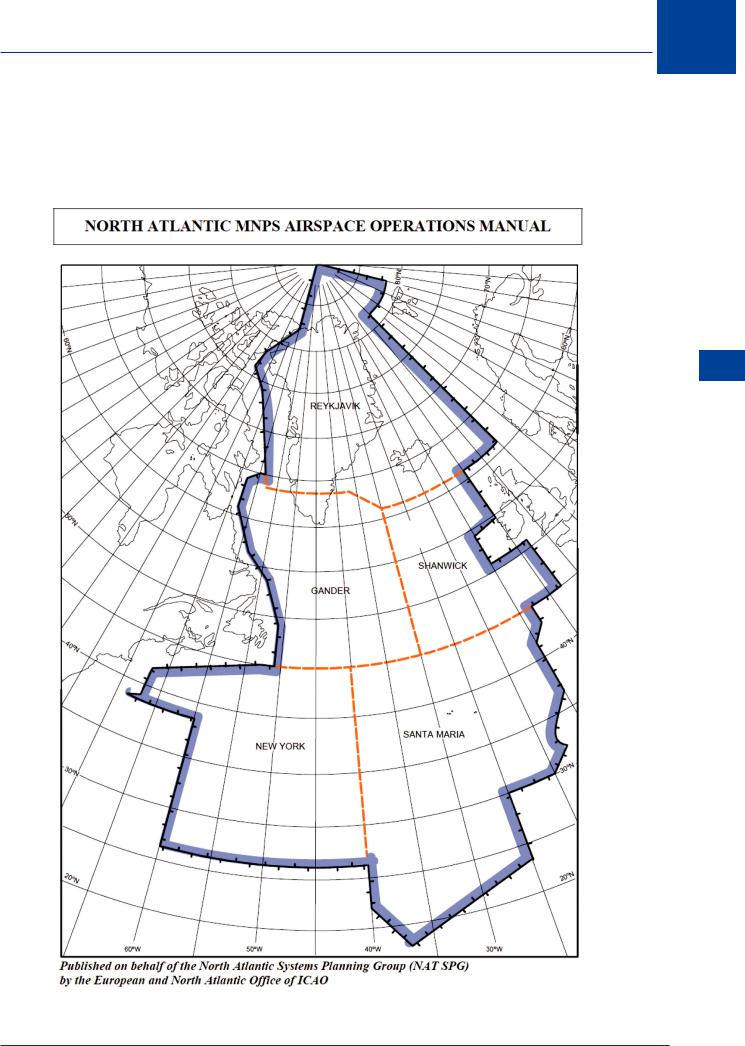
- •Textbook Series
- •Contents
- •Introduction
- •1 ICAO Annex 6
- •Introduction
- •Compliance with the Law
- •Operational Control
- •Safety
- •Alternate Aerodromes
- •Flight time
- •Flight Safety and Accident Prevention
- •Maintenance Release
- •Lighting of Aircraft
- •Navigation Lights
- •Questions
- •Answers
- •2 EU-OPS General Requirements
- •Applicability
- •Common Language
- •Quality System
- •Accident Prevention and Flight Safety Programme
- •Additional Crew Members
- •Ditching
- •Carriage of Persons
- •Crew Responsibilities
- •Responsibilities of the Commander
- •Authority of the Commander
- •Admission to the Flight Deck
- •Unauthorized Carriage
- •Portable Electronic Devices
- •Drugs and Alcohol
- •Endangering Safety
- •Documents to Be Carried
- •Manuals to Be Carried
- •Additional Information and Forms to Be Carried
- •Information to Be Retained on the Ground
- •Power to Inspect
- •Production and Preservation of Documents and Recordings
- •Leasing of Aeroplanes
- •Questions
- •Answers
- •3 Operator Supervision and Certification
- •Rules for the Certification of an Air Operator
- •Applicant Requirements
- •Aeroplane Maintenance
- •Variation, Revocation or Suspension of an AOC
- •Key Post Holders within the Operation
- •Main Operating Base
- •Aeroplanes
- •Other Considerations
- •Contents and Conditions of an AOC
- •Terminology
- •Operations Manual (OM)
- •General Rules for Operations Manuals
- •Ops Manual Amendments
- •Competence of Operations Personnel
- •Aeroplane Maintenance
- •Questions
- •Answers
- •4 Operational Procedures
- •Establishment of Procedures
- •Use of Air Traffic Control
- •Authorization and Selection of Aerodromes by the Operator
- •Meteorological Conditions
- •Approach and Landing Conditions
- •Aerodrome Operating Minima (AOM)
- •Commencement and Continuation of Approach
- •Instrument Departure and Approach Procedures
- •Noise Abatement Procedures
- •Routes and Areas of Operation
- •RVSM Operations
- •Operations in MNPS Airspace
- •Maximum Distance from an Adequate Aerodrome for Two-engine Aeroplanes without an ETOPS Approval
- •Extended Range Operations with Twin-engine Aeroplanes (ETOPS)
- •Establishment of Minimum Flight Altitudes
- •Fuel Policy
- •Carriage of Persons with Reduced Mobility (PRMs)
- •Carriage of Inadmissible Passengers, Deportees or Persons in Custody
- •Stowage of Baggage and Cargo and Galley Equipment
- •Passenger Seating
- •Passenger Briefing
- •Flight Preparation
- •ATS Flight Plan
- •Refuelling and De-fuelling
- •Crew Members at Duty Stations
- •Seats, Safety Belts and Harnesses
- •Smoking
- •Ice and Other Contaminants
- •Use of Supplemental Oxygen
- •Ground Proximity Detection
- •Occurrence Reporting
- •Questions
- •Answers
- •5 All Weather Operations
- •Introduction
- •Aerodrome Operating Minima: Operator’s Responsibility
- •Classification of Aeroplanes
- •Terminology
- •Take-off Minima
- •Visual Reference
- •Required RVR/Visibility
- •Figure 5.2 Exceptions
- •System Minima
- •Non-precision Approach
- •Minimum Descent Height
- •Visual Reference
- •Required RVR
- •No Decision Height Operations
- •Visual Reference
- •Category III RVR Requirements
- •Circling
- •Visual Approach
- •VFR Operating Minima
- •Special VFR
- •Questions
- •Answers
- •6 Aeroplane Equipment and Instruments
- •Introduction
- •Basic Requirements
- •Internal Doors and Curtains
- •First Aid Kits
- •First Aid Oxygen
- •Break-in Markings
- •Means of Emergency Evacuation
- •Cockpit Voice Recorders (CVRs)
- •Summary
- •CVRs – Operation, Construction and Installation
- •Flight Data Recorders (FDRs)
- •Summary
- •Equipment for Compliance with Flight Rules
- •Single-pilot IFR Operations
- •Altitude Alerting System
- •Standby Horizon
- •Aeroplane Lighting
- •Flights over Water
- •Long Range Flights
- •Weather Radar
- •Equipment for Operations in Icing Conditions
- •Machmeter
- •ACAS
- •Communications Equipment
- •Internal Communications
- •Audio Selector Panel (ASP)
- •Navigation Equipment
- •Instrument Procedures
- •Installation
- •Electrical Circuit Fusing
- •Windshield Wipers
- •Items not Requiring Approval
- •Seats and Harnesses
- •‘Fasten Seat Belts’ and ‘No Smoking’ Signs
- •Carriage and Use of Supplemental Oxygen
- •Crew Protective Breathing Equipment (PBE)
- •Crash Axes and Crowbars
- •Megaphones
- •Emergency Lighting
- •Emergency Locator Transmitter (ELT)
- •Survival Equipment
- •Questions
- •Answers
- •7 Crew, Logs and Records
- •Crew Composition
- •Commander
- •Relief of the Commander
- •Relief of the Co-pilot
- •System Panel Operator
- •Relief of System Panel Operator
- •Minimum Flight Crew for Operations under IFR or at Night
- •Conversion, Training and Checking
- •Type Rating
- •Conversion Training
- •Difference and Familiarization Training
- •Recurrent Training and Checking
- •Operator Proficiency Check
- •Line Checks
- •Emergency and Safety Equipment Training and Checking
- •Crew Resource Management (CRM) Training
- •Ground and Refresher Training
- •Aeroplane/STD Training
- •Pilot Qualifications to Operate in Either Pilot Seat
- •Recent Experience
- •Route and Aerodrome Qualification for Commander or PF
- •Operations on More Than One Type or Variant
- •Operation of Aeroplanes and Helicopters
- •Training Records
- •Cabin Crew
- •Journey Log
- •Operational Flight Plan (OFP)
- •Storage Periods
- •Flight and Duty Time Limitations
- •Questions
- •Answers
- •8 Long Range Flight and Polar Navigation
- •Navigation System Degradation
- •Course and INS Cross-checking
- •Unable to Continue in Accordance with ATC Clearance
- •Polar Navigation
- •Grid Navigation
- •Minimum Time Routes
- •Questions
- •Answers.
- •Introduction
- •Considerations
- •References
- •Transoceanic Navigation Problems
- •The Airspace
- •MNPS Authority
- •RVSM
- •Navigation System Requirements
- •Navigation System Serviceability
- •NAT Tracks
- •OTS Track Designation
- •OTS Changeover
- •Track Message Identifier (TMI)
- •Track Routings
- •Allocation of FLs
- •Domestic Routes
- •Polar Track Structure (PTS)
- •Other Routes within NAT MNPS Airspace
- •Route Structures Adjacent to NAT MNPS Airspace
- •Brest Oceanic Transition Area (BOTA)
- •Communications
- •SELCAL
- •Position Reports
- •Radio Failure in the North Atlantic Area
- •Initial Clearance
- •Transition
- •Meteorological Reports
- •Special Contingencies and Procedures
- •Strategic Lateral Offset Procedure (SLOP)
- •Deviation Around Severe Weather
- •Unable to Obtain Revised Clearance
- •Navigation System Failure
- •Errors Associated with Oceanic Clearances
- •Pre-flight and In-flight Procedures
- •Questions
- •Answers.
- •10 Special Operational Procedures and Hazards
- •Operating Procedures
- •Minimum Equipment List (MEL) and Master Minimum Equipment List (MMEL)
- •Ground De-icing and Anti-icing Procedures
- •The Clean Aircraft Concept
- •Bird Strike Risk and Avoidance
- •Hazard to Aeroplanes
- •Bird Strike Report
- •Incompatible Land Use around Airports
- •Noise Abatement
- •Questions
- •Answers
- •11 Fire and Smoke
- •Fire and Smoke
- •Fire in the Aeroplane
- •The Number and Location of Hand-held Fire Extinguishers
- •Smoke
- •Crew Protective Breathing Equipment (PBE)
- •Crash Axes and Crowbars
- •Overheated Brakes
- •Questions
- •Answers
- •12 Pressurization Failure
- •Pressurization Failure
- •Questions
- •Answers
- •13 Windshear and Microburst
- •Windshear and Microburst
- •Questions
- •Answers
- •14 Wake Turbulence
- •Wake Turbulence
- •Questions
- •Answers
- •15 Security
- •Security
- •Questions
- •Answers
- •16 Emergency and Precautionary Landings
- •Emergency and Precautionary Landings
- •Ditching
- •Precautionary Landing
- •Passenger Briefing
- •Evacuation
- •Megaphones
- •Questions
- •Answers
- •17 Fuel Jettison
- •Fuel Jettison
- •Jettison System Certification Requirement
- •Jettisoning Procedure
- •Safety
- •Questions
- •Answers
- •18 Transport of Dangerous Goods by Air
- •Transport of Dangerous Goods by Air
- •Technical Instructions
- •Labelling and Packaging
- •Loading Restrictions
- •Provision of Information
- •Emergencies
- •Training
- •Accident and Incident Reporting
- •Acceptance of Dangerous Goods
- •Inspection for Damage, Leakage or Contamination
- •Labelling
- •Questions
- •Answers
- •19 Contaminated Runways
- •Contaminated Runways
- •Contaminated Runway
- •Damp Runway
- •Wet Runway
- •Dry Runway
- •Contaminant Depth Limitations
- •Aquaplaning (Hydroplaning)
- •Braking Action
- •Coefficient of Friction
- •Performance Considerations
- •SNOWTAMs
- •Questions
- •Answers
- •20 Revision Questions
- •Questions
- •Answers
- •21 Index

MNPSA 9
Introduction
Due to economic, geographical and geophysical considerations, the airspace over the North Atlantic Ocean between the latitudes of 35N and 70N is some of the most frequently flown airspace in the World. Typically there could be up to 300 aircraft over the Ocean at the same time. More than 425 000 commercial aircraft alone cross the airspace annually. This may seem excessive, but consider that we, flying scheduled passenger operations, share the sky with airfreight operators, the military and long range general aviation aircraft. Whilst the airspace is vast (some 6 million square miles) and the possibility of one aircraft even seeing another would appear remote, the actual situation is dramatically different. By agreement between the states bordering the North Atlantic (Canada; USA; Iceland; Greenland; Norway; the UK; Eire; France; Spain; Portugal) the ICAO North Atlantic Region (NAT region) has been established to provide a framework for the solution of problems concerned with transoceanic operations. Within the NAT region, the area over the ocean and northwards towards the North Pole is designated as airspace in which a minimum standard for air navigation has been specified. This is known as the NAT Minimum Navigation Performance Specification Airspace (MNPSA). ICAO publishes two documents concerned with the NAT region: Doc 7030 contains the NAT Regional Supplements, and the North Atlantic MNPS Airspace OM covering specific NAT procedures.
Considerations
The problems are threefold: Firstly, the economic requirement is for traffic to fly to and from North America, mainly the United States and Canada, and Europe. The majority of this traffic is scheduled passenger operations and this falls into distinct flow patterns resulting in a tidal type of situation with peaks in each direction at certain times of the day. Secondly, the meteorological situation over the Ocean ‘standardizes’ the polar frontal jet stream and the sub-tropical jet stream at about 55°N and 40°N respectively. The jet stream flow is always from west to east. Whilst it is not always desirable to fly in a jet stream it is always desirable to avoid a jet stream when flying in the opposite direction. Modern turbine powered aeroplanes are most efficient (fuel efficient) at the altitude where the air is coldest (densest) for engine performance, but least dense for drag reduction. The air is coldest at the tropopause but whilst the air above the tropopause is less dense, the temperature remains constant and therefore there is little advantage to be gained by climbing above the tropopause. Hence, all the traffic flying across the North Atlantic will want to cruise at or about the tropopause. At 40°N this will be about 40 000 ft whereas at 55°N this will be about 35 000 ft. This tends to concentrate all the traffic at or about these altitudes. Finally, the total absence of ground based navigation aids means that navigation accuracy will not be as good as over land and allowances in separation will need to be made by the ATC authorities.
References
1.ICAO North Atlantic Manual.
2.ICAO Regional Air Navigation (RAN) Plan for the NAT Region.
3.ICAO Regional Supplementary Procedures (Doc 7030).
Transoceanic Navigation Problems
The problems of navigating aeroplanes over vast areas of sea are really no worse than the problems of doing the same over huge tracts of uninhabited land e.g. the Sahara Desert. These are:
MNPSA 9
119

9 MNPSA
MNPSA 9
•No aerodromes.
•No ground based radar.
•No fixed radio navigation beacons (VOR; NDB etc.).
•Outside of VHF radio range hence reliance on HF communications.
Additionally, the North Atlantic suffers from abnormally high levels of traffic density with modern turbine engined aeroplanes wanting to fly at the same flight levels, and an economically generated tidal flow of traffic. As the NAT region encompasses latitudes higher than 70N problems are encountered with magnetic compasses due to the weak horizontal component of the Earth’s magnetic field (less than 6 μTesla) and occasionally large values of magnetic variation (31°W at Resolute Bay in northern Canada). This last problem requires radio navigation beacons to be oriented to true north and at polar latitudes the use of grid navigation techniques using gyro referenced compasses.
The Airspace
The concentration of the traffic by route and altitude, together with the separation requirements and navigation system requirements, mean that all traffic flying across the North Atlantic is required to fly IFR. To this extent, all the airspace is classified as class A between FL55 and FL660. By definition, class A is controlled airspace (CAS) in which ATC is provided to IFR traffic therefore the airspace must, by definition, be a control area (CTA). Indeed this is the case but because special rules are applicable, the airspace is defined as an Oceanic Control Area (OCA). In practice, there are 5 NAT OCAs encompassing the MNPSA (Shanwick; Santa Maria; Gander; New York; Reykjavik) with 5 corresponding Oceanic Area Control Centres (OACCs) at Prestwick; Lisbon; Gander; New York and Reykjavik respectively. The OCAs are contiguous with the East/West boundary being at 30W (Shanwick and Gander) and 40W (Santa Maria and New York) and the North/South boundary being at 45N (Shanwick/Gander and Santa Maria/New York). Reykjavik extends from the northern boundaries of Shanwick and Gander to the North Pole, including the majority of Greenland. The easterly and westerly continental boundaries are defined by domestic airspace (national FIRs) although beyond the SW boundary of New York North Atlantic Oceanic Airspace is still New York OCA, but not part of the NAT MNPSA. This area is known as the West Atlantic Route System (WATRS) and contains routings for traffic between USA and the Caribbean. The Easterly boundary of Reykjavik is the western boundary of the Bodø (pronounced Boo der) OCA. Bodø is in Norway and the OCA is not part of the MNPSA area.
MNPS Authority
Operators of aircraft flying within the MNPSA are required to have authority approval (stated on the AOC) requiring the aircraft to be able to navigate in accordance with the relevant RNP. Approval for MNPS will be indicated to Air Traffic by inserting the letters SX in item 10 of the flight plan.
Practical experience has shown that when two or more turbojet aircraft, operating along the same route at the same flight level, maintain the same Mach number, they are more likely to maintain a constant time interval between each other than when using other methods. This is due to the fact that the aircraft concerned are normally subject to approximately the same wind and air temperature conditions, and minor variations in ground speed, which might increase and decrease the spacing between them, tend to be neutralized over long periods of flight. Requested TRUE Mach number, taking into account known errors in the flight deck indication, is to be inserted in item 15 of the flight plan. Wherever possible this requested speed will be accommodated, however occasionally ATC may need to assign a Mach number
120

MNPSA 9
0.01 higher than, or 0.02 lower than requested. Pilots should maintain their last assigned Mach number during step-climbs in oceanic airspace. If due to aircraft performance this is not feasible ATC should be advised at the time of the request for the step climb. After leaving oceanic airspace pilots must maintain their assigned Mach number in domestic controlled airspace unless and until the appropriate ATC unit authorizes a change.
MNPSA 9
Figure 9.1: NAT airspace
121

MNPSA 9
9 MNPSA
RVSM
MNPS Airspace extends from Flight Level (FL) 285-420, incorporating the RVSM FLs 290-410. Aircraft flying in MNPSA must also be authorized to fly RVSM, and must comply with the altimetry Minimum Aircraft System Performance Specification (MASPS). In domestic airspace RVSM FLs are allocated according to magnetic track (i.e. flights Easterly are on odd FL, 290, 310 etc, Westerly on even FL 300, 320 etc.) Due to the tidal nature of the majority of North Atlantic traffic during the times of the Organized Track System (OTS) all FL are available in both directions. Outside the OTS standard RVSM FL apply. The minimum equipment requirement for RVSM flight is as follows;
•Two independent barometric altimeters agreeing to within +/- 200 ft
•Autopilot with height hold capability
•Altitude deviation alerting system (minimum of an aural alert if the aircraft deviates by +/-
300 ft)
•SSR with altitude alerting mode (mode C)
•The altimeters must be checked prior to entering the NAT OCA. Pilots must report when reaching any new cruising level, and if a deviation of more than 300 ft occurs it must be reported to ATS, with a subsequent written report post flight.
Navigation System Requirements
The minimum equipment for flight in MNPS Airspace is 2 independent Long Range Navigation Systems (LRNS) to cater for failure of one system. Approved systems may be:
•GNSS (GPS)
•INS
•IRS
Each system must be capable of providing continuous position, track and speed information.
In addition, all turbine powered aeroplanes with MTOM > 5700 kg, or having more than 19 passenger seats are required to carry and operate ACAS II in the NAT region. (However this equipment is required in the relevant aircraft of all EU operators anyway)
Navigation System Serviceability
The requirement for 2 LRNS covers the case of a failure in one system and each system must have a failure warning indication. Where triple INs are used as an IRS, a ‘voting’ system is employed to ensure use of the most accurate information. In a double INS system, external information (heading and drift) will be required to determine which system is inaccurate if a failure occurs. In the event of total failure, ask another aircraft for assistance or follow the contrails. In the event of total navigation system failure, declare an emergency using MAYDAY or PAN PAN procedures. Navigation system failure procedures are covered at the end of this chapter.
122
